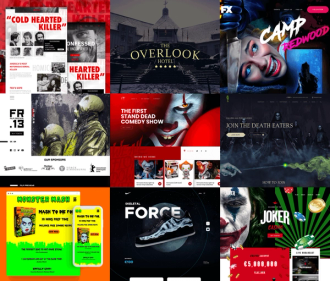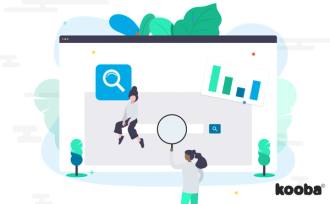Picture the scene. An established business in the healthcare devices sector*. Yes, the company grows to some extent year on year, but certainly not in a way anybody is going to get particularly excited about.
A vast amount of money is spent every year on a large field sales operation. That’s how it has always been done in medical devices, and how it always will be. When results are bad, the head of sales takes a long walk off a short pier and the company resets. OK, another vast amount of money heads for Davy Jones’ Locker with her, and the company has to rebuild an expensive sales team from scratch, but that’s the price of doing business.
Meanwhile, the company’s website looks like it has freshly arrived via time machine from some prehistoric era when flip-phones and Yahoo! were a thing.
Some nice photography, a few bits of text here and there, a phone number to call if you want to talk to one of the highly paid sales people we mentioned earlier. I suppose it does some sort of a job. Just don’t try looking at it on your mobile.
This isn’t some out-there fantasy. It’s a reality for a huge number of businesses in all sorts of sectors. In fact, apart from some switched on organisations in B2B software and ecommerce it’s normal, or something close to normal.
And changing this outlook is the number one case for investing in online design and development.
Spending where it counts
I hope we all understood what was wrong with my little scenario above, but just in case it didn’t fully sink in let me explain precisely what our imaginary business was doing wrong.
Firstly, they are making the mistake of believing that their old way of doing business is under no threat. More specifically, they continue to spend big on field sales and the associated infrastructure behind it. And whilst I would be the first to admit that there’s a place for field sales (I do enough of it myself after all) we should understand that that place is getting smaller every day and increasingly focused at the business end of a sales deal.
In other words, and this is true of almost every ‘disruptor’ in every vertical, an increasing amount of the sale happens in the virtual world. Even back in 2015 Forrester were reporting that 75% of B2B buyers preferred to buy online.
On that basis, it makes an awful lot of sense to spend money making that process as easy and intuitive as possible.
Which leads me onto my second point. By focusing on the field sales operation we almost inevitably conclude that more and better people are the key to growth. And then, like David Bowie in his cool Berlin phase, they find themselves “always crashing in the same car”. People are important, of course. But they are not permanent - good ones disappear off to another challenge and bad ones… well, let’s not go into what happens to bad ones.
In other words, investment in people isn’t something that resets the business on a higher more profitable plane.
Great online work, however, is (to both quote Keats and exaggerate a little) “a thing of beauty and a joy forever”. Spending time and money to put in place a meaningful marketing and sales journey pays dividends now and in the future. And when compared to some of the more established sales practices we’ve been discussing, it isn’t really such a huge investment anyway.
Putting the sales process online
It’s fair to ask at this point what I mean when I talk about ‘a meaningful marketing and sales journey’. What does moving this journey online mean?
Well, the journey is the series of steps a potential customer takes from initial awareness of a product or service to signing on the line that is dotted (this last action also done online in many cases of course).
That process requires the prospect to learn more about your product and service, and your own organisation to learn more about them. Both these things can and do take place online. A well designed process leads the prospect naturally through this journey (rather than asking them to find their own way around a vast brochure website) and carefully optimises any specific process that leads to an action such as requesting a demo or making an initial contact.
Essentially, it’s about carefully managing that conversation to ensure the maximum number of site visitors become known prospects, and then in turn customers.
If anybody doubts that this is important, we need only look at the vast sums of money that leading B2C businesses invest in online UX and design. They understand the central importance of getting from attention to close and they have no choice but to make it happen online.
We can copy those businesses and learn from them. We can also learn from B2B players who sell relatively sophisticated product online. Take Zendesk as an example: A business like this has invested in clear information architecture and content, online live chat, clear actions and optimised landing pages and flows behind them. All these elements together bring the prospect all the way to the sale, and in many cases over the line, before they have spoken to anybody at all.
If you had told me 20 years ago that enterprise software could be sold in this way I would have laughed. But it has come to pass. And if you think this trend doesn’t apply to your own particular vertical, you are wrong.
It’s time to spend online. And cut the expense accounts.
*For anyone attempting to read between the lines, be assured this is an entirely fictional company and not some thinly veiled dig at a real one!








